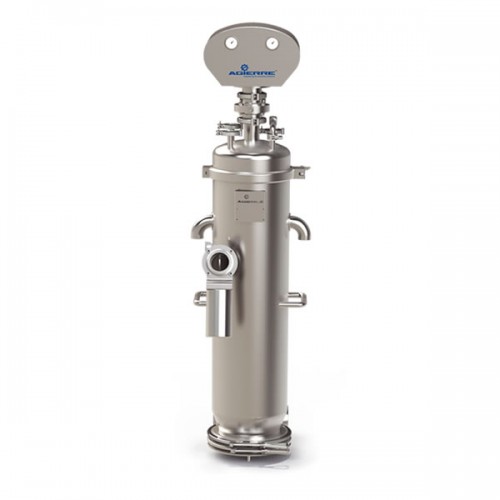Vacuum Transfer System for Powder - VTS

Applications: Vacuum Conveyors are widely used in pharmaceutical, chemical, and food industries and serve various purposes, including charging/discharging materials to/from Bins, drums, hoppers, or other containers. They also facilitate the loading/unloading of mixers, reactors, fluid bed dryers and coolers, and dosing and packaging machines.
Functionality and Operation: The VTS works on the principle of vacuum suction generated by a Venturi pump, electric or liquid ring pump, or customer’s central air system. A high-quality filter safely removes excess air and keeps the product inside the Vacuum Conveyor body, ensuring minimal contamination and maintaining product integrity.
When enough product has accumulated, the valve at the bottom of the Conveyor opens to discharge the material. The filter then cleans itself, preparing the system to repeat the process. Vacuum transfer enables powder handling at a low velocity (dense phase conveying), guaranteeing constant and consistent product transfer without causing shocks or de-mixing.
CIP System Integration: The Clean-in-Place (CIP) system is an automated washing solution specifically designed for integration with Vacuum Conveyors that allows for thorough cleaning of all internal surfaces, components, and filter units.
Cleaning-in-Place reduces downtime by avoiding the need to disconnect and deliver the Conveyor to the washing area. After the cleaning cycle, the system dries the machine, permitting the Vacuum Conveyor to start transferring the next batch of the same or different product immediately.
Customization Options: At AGIERRE, we understand that each application is unique. That is why we offer personalized solutions to meet specific needs. Whether adapting to space constraints or integrating additional features, our Vacuum Conveyors can be adapted accordingly.
Handling Explosive Substances: The VTS can safely transfer hazardous powders. During the discharge phase, the system maintains a residual oxygen level of less than 6% through an inertization process.
Depending on its application, we can produce Vacuum Conveyors in three different configurations:
It is characterized by product suction using a vacuum. Once the Conveyor’s body is full, a valve at the bottom opens, and gravity forces facilitate the product’s discharge into the receiving equipment.
During product discharge, air or nitrogen gas is injected into the Conveyor’s body, creating an overpressure environment and ensuring smooth product flow into the receiving container or machine.
The air is completely extracted from the Conveyor’s body before introducing nitrogen gas, which eliminates any potential risk of fire or explosion, making it suitable for handling sensitive or hazardous products.
Vacuum Transfer System for Powder